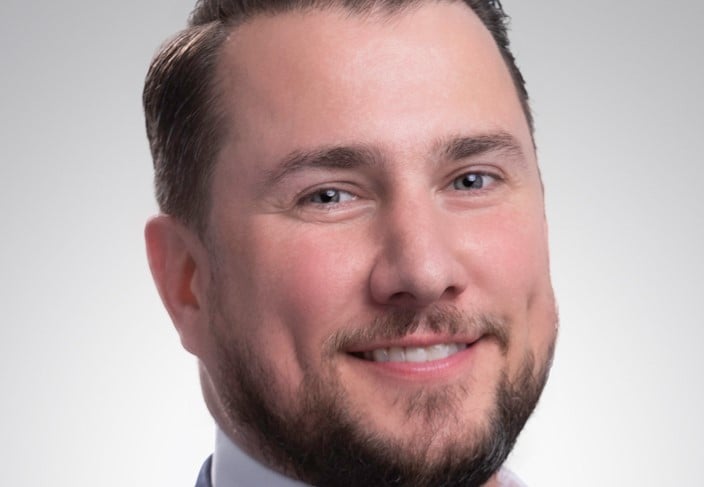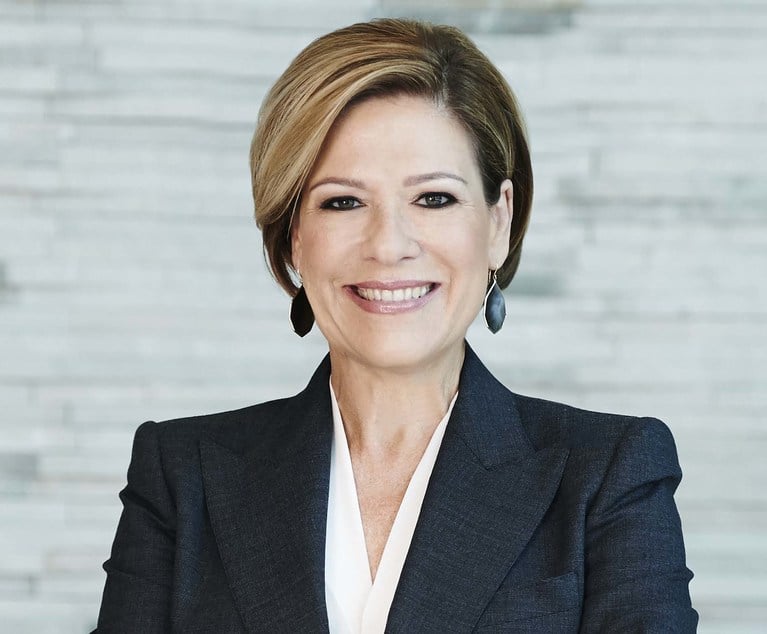The medical office building market is being driven to new heights with sound underlying fundamentals. That is according to Mark Alexander, president of Mark Alexander Medical Office Brokerage, based in Miami Beach, FL. Alexander was recently a panelist at the RealShare National Healthcare Real Estate 2015 conference in Scottsdale, AZ.
"While REITs mainly buy hospital related MOBs when healthcare systems decide to monetize their buildings, there is a sizable market for CCIMs to do much more business listing doctor owned MOBs on sale/leaseback transactions," he tells GlobeSt.com. "There is a wave of senior doctors due to retire over the next five years in America. These senior doctors control the majority of the doctor owned MOBs in the US today."
Check out the below column from Alexander to learn more on the subject. The views expressed below are the author's own.
According to latest data from Revista, a company that tracks the national medical office market:
- Hospitals control 5,400 medical properties for a total of 1.5 billion square feet in the US.
- Doctors control 32,200 medical properties for a total of 1.3 billion square feet.
- The US has 84.4 million square feet of MOB new construction underway covering 647 properties that total 84.4 million square feet.
- 63% of all MOBs were built before the year 2000. This means 1.7 billion square feet of existing MOB space will require new construction to upgrade these older MOBs over the coming decade because: Doctors and hospitals prefer new facilities & technology advancements in medicine require upgraded smart buildings to support health care delivery today.
Health Care Demand Drivers
The rising demand for health care services is driving the need for more MOB space to be built to accommodate growth.
The drivers pushing growth in the medical office building sector are a combination of three factors that have created a perfect storm of strong underlying business fundamentals that are set to propel the MOB market over the next ten to fifteen years.
The three MOB market drivers are:
*Demand Driver #1:
Effects of Affordable Care Act (ACA) and Aging Demographics
ACA has allowed 15.3 million people to obtain medical insurance between January 2013 and September 2015 that otherwise would not have been available to them. In January 2013 the US had 4.8 square feet of medical office space for each medically insured patient, but in September 2015, the US had just 4.58 square feet of MOB space for each medically insured patient. The increased demand for medical care caused by the Affordable Care Act has created a gap or need for 62 million more square feet of MOB space to simply return to where we were in January 2013.
This ACA-fueled permanent uptick in demand for health care services and corresponding need for more MOB space to treat these new patients combines with aging baby boomer population (i.e. those born between 1946 and 1964). This combination of factors creates a steady increase in demand for HC services that will be sustained over the next 10 to 15 years.
The older we get, the more health care we need. According to the US CDC (Center for Disease Control), the growth in the number and proportion of older adults is unprecedented in the history of the United States. Longer lifespans and aging baby boomers have brought the US to its current status where 66% of all US health care expenditures are made by or on behalf of those aged 65 or older. According to the US Census Bureau, the total number of US baby boomers (BBs) that have reached the age 65 over the last two years has increased by 2 million. That increase of 1 million BBs each year is expected to increase to 2 million new BBs per year for each of the next ten years, from 45 million in 2015 to 65 million BBs in 2025. Then the BB growth rate is expected to slow a tad to 1.4 million BBs per year from 2025 thru 2030 when the US Census Bureau expects the baby boomer population over 65 years of age to reach approximately 72 million.
Given these factors, demand for health care services over the next ten to fifteen years will be quite remarkable. We need many more doctors and medical office buildings to service this rising demand for health care services over the next ten to fifteen years. Health Care delivery must and will change to support this escalating HC demand so the emergence of tele-medicine will play an ever increasing role in HC delivery going forward. If you are an investor who owns a medical office building, it looks promising for you to keep that MOB 100% occupied with growing rents for decades.
*Demand Driver #2:
Hospital Systems & Doctors Move Away from Hospital Campuses into the Communities They Serve
This trend is called the "Retail-ization" of Health Care. Hospitals and doctors are following the retail model of business by seeking shopping center type clinic locations closer to where people live to be more convenient to patients. In the past, hospitals were located in the older part of town and your main choice when you became ill was to travel to the hospital. This aging model is also the most expensive form of HC service delivery.
Today, there are many more choices to get HC closer to where you live at more affordable prices than a hospital and this trend will continue. These new retail oriented MOBs include urgent care centers, wellness centers, ambulatory surgical centers and mini-hospitals with bigger footprints of 20,000 to 40,000 square feet. These facilities house multiple medical specialties with some even including a surgery center for one-stop type medical shopping.
An example of this new mini-hospital type property with a retail location is the 25,000 square foot Boca Raton Regional Hospital project in Deerfield Beach. It cost $8.3 million including the land or $332 per square foot. Its specialty uses will include urgent care, primary care, women's care and Imaging (MRI and X-ray).
But 63% all MOB inventory today was built prior to 2000. Since tele-medicine is expected to play a major role in the future of HC delivery, and hospitals and doctors prefer to serve patients in newer buildings, these older MOBs will need major retrofitting for technology and office lay-out up-grades to maintaining class A fit and finish. For these reasons, MOB construction activity is expected to remain brisk over the next decade, helping the local economies.
*Demand Driver #3:
Favorable Capital Environment
Investors and capital markets have flocked to this MOB sector because of the strong underlying business fundamentals noted above. According to Revista, over the past seven quarters (from January 2014 through September 2015), investors have purchased $18.7 billion worth of hospital and medical office properties. Over that same time frame, average hospital property values have increased from $262 to $361 per square foot (PSF) and MOB average property values have increased from $245 to $317 PSF.
These escalating sale prices (per square foot) or "cap rate compression", as it is known in commercial real estate circles has occurred because there is more demand than supply of hospital and medical office properties. Eighty-five percent of all MOBs (including hospital properties) are still owned by health care providers today. So, opportunities for MOB investors cannot occur until these MOB owner/occupants are convinced to monetize their facilities. Not-for-profit health care systems avoid sale/leasebacks today since they would then have to pay real estate taxes once they monetize their MOBs. This further chokes supply of NNN leased MOBs from the health care system sector. But the supply of MD owned MOBs coming to market as sale/leaseback investments is rising over the next five years due to a wave of senior doctors retiring in the US over this period.
This constraint on MOB supply (or barrier to entry for MOB investors) has helped escalate prices for MOBs over the past two years. Real Estate Investment Trusts, or REITS, today own only a small percentage of the MOB market. This is the case because they tend to strictly buy properties that have credit tenants with health care systems. The vast majority of the MOB market is made up of non-credit tenants (i.e. groups of doctors).
The stability of the MOB market has been one of the main reasons why capital markets have embraced the MOB sector. For example, according to Revista, tracking occupancy rates through the recession for high quality MOBs compared to high quality general office buildings in central business districts (CBD) across the US, MOBs averaged a 9% vacancy rate in 2007 and rose to 10.5% at the peak of the recession in 2009 before leveling off to a vacancy below 10% in 2014. Conversely, high quality general office buildings started with a 12.5 vacancy average in 2007 and peaked at 17.5% in 2009 before inching down to 15% vacancy by 2014.
These metrics proved that the MOB sector is much more recession resistant than the general office market. This sector stability has attracted capital looking for security. MOB REITS are raising more money for MOB purchases and now equity & pension funds are have jumped into the MOB acquisition pool as well. Cross-over buyers to the MOB market from other commercial real estate sectors have been noted. For example, one of my company's best investors is a family from New York City that had previously focused on multi-family apartment investments over the past two decades. Two years ago they crossed over to the MOB sector and they now only purchase MOBs because of the better returns (i.e. cap rates) and potential for future growth.
Additionally, shifting exchange rates relative to the US dollar and political instability around the world have combined to increase the attractiveness of the US commercial real estate market, with the US MOB sector appearing to be among the safest havens.
Continue Reading for Free
Register and gain access to:
- Breaking commercial real estate news and analysis, on-site and via our newsletters and custom alerts
- Educational webcasts, white papers, and ebooks from industry thought leaders
- Critical coverage of the property casualty insurance and financial advisory markets on our other ALM sites, PropertyCasualty360 and ThinkAdvisor
Already have an account? Sign In Now
© 2024 ALM Global, LLC, All Rights Reserved. Request academic re-use from www.copyright.com. All other uses, submit a request to [email protected]. For more information visit Asset & Logo Licensing.








